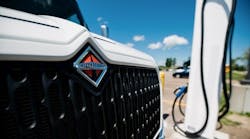Once we find something that works, we all get comfortable doing it the same way time and time and time again. It’s the old “if it ain’t broke, don’t fix it” attitude.
I’m fairly certain that idea, along with “out of sight, out of mind” is what’s going on when it comes to electronic engine parameters. Parameter settings are not something you can actually see, so it’s easy to forget about them, I suppose.
Be honest, when was the last time you evaluated the electronic parameters on your vehicles’ engines? I’m guessing it’s been awhile.
What about when you order new trucks? Do you just go with whatever engine parameter settings you had on the previous truck order? Do you even talk about what your options are when it comes to electronic engine parameters?
I know there are a plethora of engine parameters that can be set and that it takes time to understand them all and then determine which make the most sense given your fleet’s specific operation and goals.
In doing research for our recent Confidence Report on electronic engine parameters we interviewed truck and engine OEMs, and for the first time truck dealers. They told us that fleets seemed to have a decent understanding of some of the more commonly used parameters like accelerator maximum vehicle speed or cruise control maximum vehicle speed. However, they were sketchy on things like droop settings.
We learned that the typical length of time a fleet wants to talk about parameters during a review of vehicle specifications was “anywhere from no discussion at all to a 45-minute discussion.”
Are you spending more time talking to dealership salespeople about interior trim options than you do on engine parameters? What possible fuel efficiency gain can you get from interior trim? With engine parameters optimized for fuel economy you can see a 5-8% increase that would save you thousands of dollars in fuel per truck. Maybe things are in fact “broke,” and require some of your attention.
If your dealership salesperson can’t answer your questions, ask for a joint meeting with the OEM. Keep asking questions until you understand how to best set parameters to optimize for fuel economy in your fleets.
Anything that costs you nothing but can save you fuel is worth spending a little time on — even if you can’t see them.


